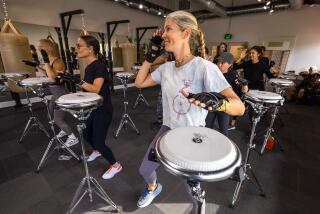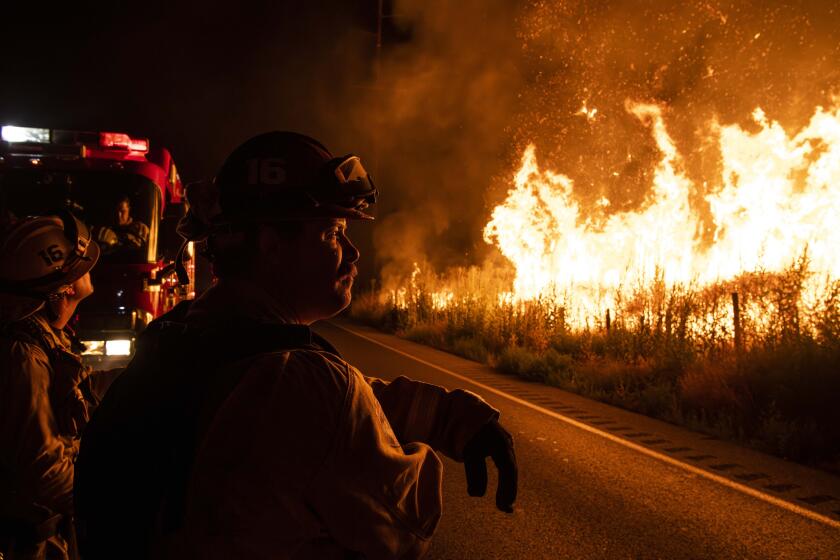Different Drummer : Youngsters Learn the Language of African Rhythms
- Share via
Like most teachers, Craig Woodson is not the sort to put up with talking in class--unless the talking is done with an African drum.
African drums are Woodson’s specialty. Over the years, the trained ethnomusicologist has demonstrated the art of drumming before hundreds of audiences throughout the country.
Just recently, Woodson and master drummer Kwasi Badu, a longtime friend from Ghana, filled the air with the rhythmic dialogue of drum beats in the auditorium at Charnock Road Elementary School in West Los Angeles. Their young audience screamed with delight.
History of Drum
“I love it. They are so excitable, they have such energy,” Woodson said of the students.
During the class, Woodson, 44, and Badu, 64, gave a brief history of the African drum and described some of its many variations and uses in dance and communication. The children danced, clapped and took turns beating the drums.
At one point, Badu led Principal Evelyn Barker and several teachers to the front of the auditorium, where they performed a traditional African dance. The children roared with laughter at the sight of their teachers and principal dancing, and gave them a standing ovation.
“It was great,” said Barima Boafo, 9, a third-grade student who had a special interest in the performance because his father is from Ghana.
Multicultural Programs
Woodson’s visit to the Charnock Road School was part of a program run by the Los Angeles County Music Center. It cost the school about $300 for two performances, Woodson said.
“The program is terrific for kids,” Barker said. “It is part of our multicultural program. We try to have something each month to help the children learn about different cultures.”
Woodson, who holds a doctorate in music from UCLA, lived in Ghana from 1979 to 1981. He returned for one year in 1983 to direct a project involving the mass production of African instruments for Ghanaian public schools.
The musician, who lives in Venice, started out as a jazz drummer, but he said he became hooked on African drums 20 years ago at UCLA, where he first he met his musical mentor, Badu, a noted drummer from Ghana.
As part of his performance, Woodson introduced several examples of African drums to his audience. He demonstrated how drums are made with an instrument resembling a common garden hoe. He even brought some homemade drums fashioned from empty water bottles and coffee cans.
Years ago the language of the drum was one of the main means of communication over distances in Africa. Today, however, the drum is no longer the easiest means of relaying news from one village to the next, and the art of the talking drum is close to extinction. There are few artists left who still practice the difficult task, Woodson said.
Legend has it that man first began communicating on drums in an attempt to imitate the sounds made by monkeys beating on hollowed-out logs. “Hunters watched the monkeys play and decided they could do it better,” Badu said, adding that they hollowed out the log and added a skin over the drum’s head to improve the sound.
The main talking drum are the Atumpan, a pair of drums which are played with little mallets in a way that imitates the “Twi” language of Ghana, said Woodson. He and Badu demonstrated how the Atumpan and three other drums are used with a traditional African bell to produce a rhythmic song. Badu also showed the versatility of the sound the drum makes by playing “Jingle Bells” for the students.
Woodson said his experience with African instruments has led to a dream of creating an orchestra made up of musical instruments from around the world.
Such an orchestra, he said, would help lead to greater world understanding. “It would sound incredible,” he said.
More to Read
Sign up for Essential California
The most important California stories and recommendations in your inbox every morning.
You may occasionally receive promotional content from the Los Angeles Times.










